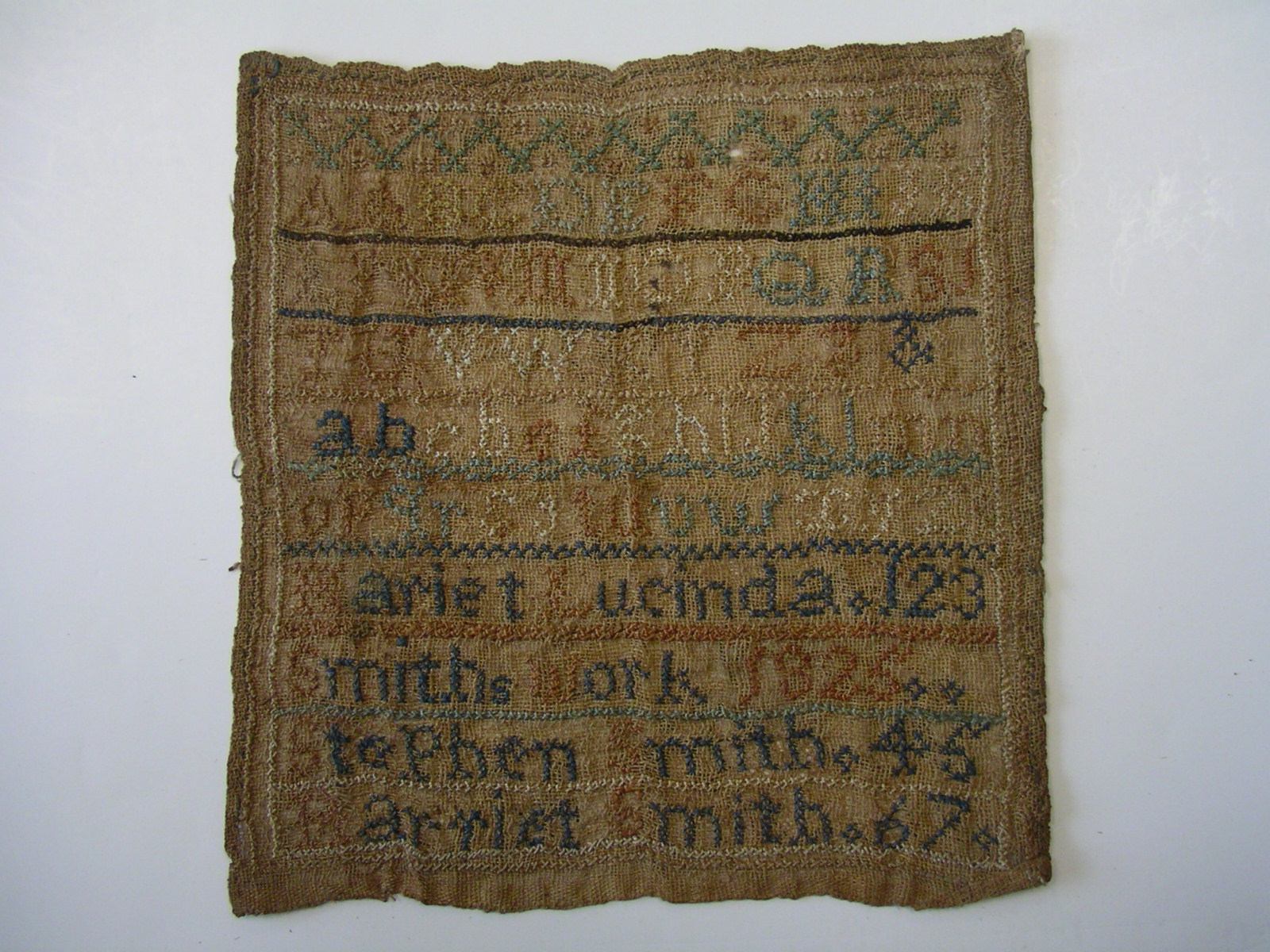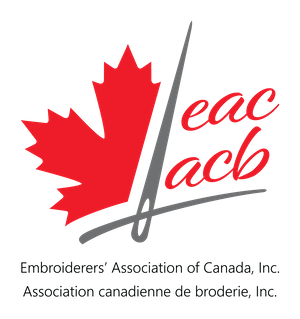SAM-05002
Estimated Date Stitched:
1825
Estimated Age of Stitcher:
late 20s
School and/or Teacher:
Name of Stitcher:
Harriet Smith
Type of Sampler:
alphabet
Size of Sampler:
Width: 20.1cm
Height: 21.5cm
Description:
Condition: Good
Description of condition:
Fabric Type:
Linen
Approximate thread count:
25
Embroidery thread type:
cotton
Number of letters: Number of Alphabets: 2
Case: Upper Case, Lower Case
Description of alphabets:
Number of sets of numerals:
Description of numerals:
Borders: simple cross – hemmed on three edges
Motifs:
Type of stitches: Cross – counted over two threads
Name or initials on sampler: Harriet Smith
Verse or Inscription:
AACBDEFGHIJK
LMMMNOPQRSt
TUVWXYZ3&
abcbefghijklmn
opqrsttuvwxyz
Hariet Lucinda. 123
Smith’s work 1825..
Stephen Smith. 45
Harriet Smith.67.
Owner / Donor Story:
A sampler stitched in 1825 by a Black woman was part of the bequest of Dorothy Binga Taylor to The Chatham-Kent Black Historical Society. When news of the sampler reached the members of the local chapter of the Embroiderers’ Association of Canada, the group gave The Chatham-Kent Black History Society a grant to have the sampler professionally conserved and framed.
Harriet Smith, the woman who stitched the sampler, was married in 1816 and lived in Columbia, Pennsylvania, with her husband, Stephen Smith, a businessman prominent in the abolitionist movement. With his partner, William Whipper, Stephen Smith assisted many fugitive slaves to escape to Canada and settle in Dresden, Ontario, where both Smith and Whipper owned land.
Since Harriet Smith had been a servant in a Quaker household before her marriage, she would have been familiar with samplers to teach young women the alphabet and fine sewing skills. She also lived in a region where the Quakers had a substantial commitment to education for Blacks, with day and night school classes for children and adults.
Nine years after her marriage, as the wife of a prominent man in the community and becoming active in the abolitionist movement, she may have seen the necessity for literacy. In the tradition of women of the day, she did a sampler.
In the lower case letters, she has done what many students learning the alphabet do and mixed up the ‚Äėb‚Äô and ‚Äėd‚Äô so that there is no ‚Äėd‚Äô but a repeat of the letter ‚Äėb.‚Äô No correction was made here. The fact that she misspelled her name the first time supports the idea that she was learning to spell. The second time that she worked her name, she spelled Harriet correctly.
The charm of this sampler lies in the na√Įve format. The stitcher is precise in her count but does not appear to be trying to design or lay out the work artistically. The mistakes in the sampler confirm the premise that the stitcher was learning her alphabet and provide a rare glimpse of the learning curve for an adult woman working her way to literacy in the early 19th century.
Harriet later became a member of the North Star Association, which had been formed by Frederick Douglass‚Äô newspaper, the North Star, to promote emancipation. In 1848, she was elected president of the Women’s Association of Philadelphia, a group organized to raise funds for the betterment of Blacks. These were enormous accomplishments for a Black woman who had signed her marriage certificate with an X.
The Chatham-Kent Black Historical Society is very pleased to have been given the sampler and other family documents by Dorothy Binga Taylor, a descendant of the family who has faithfully preserved the family’s long history in the Chatham-Kent area.
Other Information:
Photographs
No. of photographs: Number of photographs: 1
Description of photographs:
Reference numbers: (Museum, archive or other references associated with sampler)

If you have more info about this sampler, please contact us at samplers@eac-acb.ca

